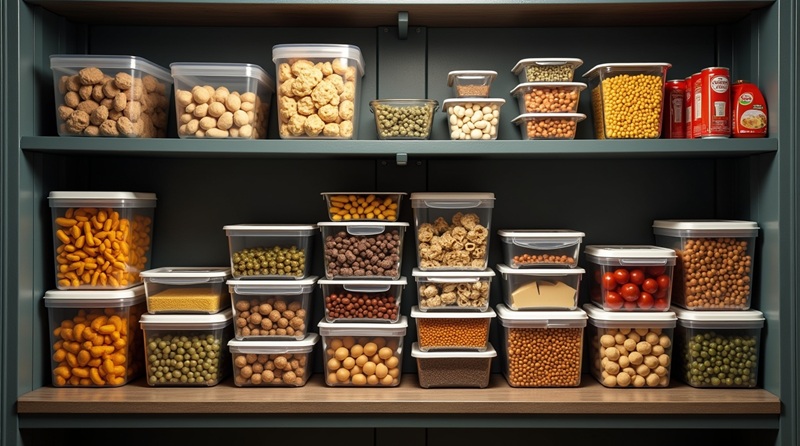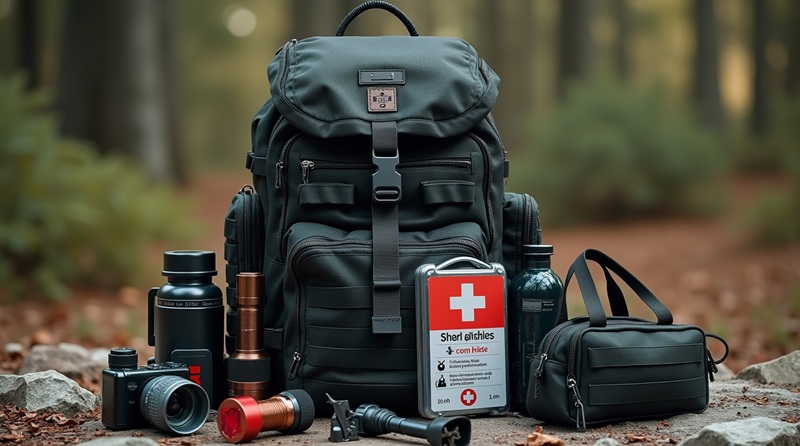Food is a fundamental pillar of any crisis preparedness. In a disaster, supermarkets can be emptied within hours. Having a long-term food supply ensures your family’s autonomy for days, weeks, or even months depending on the scenario.
This guide details existing solutions, selection criteria, and offers a choice of the most effective premium products in 2025.
Why Store Long-Term Survival Food?
- Independence: Avoid reliance on logistics and supply shortages.
- Emotional Stability: Reduce stress and anxiety linked to food uncertainty.
- Flexibility: Useful in crises, outdoor expeditions, or prolonged isolation.
Main Types of Long-Term Food
1. Freeze-Dried Meals
- Lightweight with shelf life up to 25 years.
- Easy to prepare with hot water.
- Examples: Mountain House, Tactical Foodpack.
- Ideal for hiking, emergencies, and long-term storage.
2. Canned Goods
- Shelf life of 3 to 5 years, sometimes longer.
- Affordable and easy to find but heavy and bulky.
- Examples: canned vegetables, meats, fish, vacuum-packed meals.
3. Energy and Nutrition Bars
- Compact and practical format.
- Provide quick and stable calories.
- Examples: Datrex, SOS Food Lab.
- Perfect for fatigue or mobile situations.
4. MRE Packs (Meals Ready to Eat)
- Military all-in-one rations with chemical heaters.
- Shelf life 5 to 10 years.
- Examples: XMRE, MRE Star.
- Convenient when cooking is impossible.
5. Bulk Dry Ingredients
- Rice, pasta, lentils, oats.
- Cost-effective with good nutrition.
- Require regular stock rotation.
How to Build a Balanced Food Supply?
- Daily Calories: Aim for about 2,000 kcal per adult per day.
- Macronutrients: Proteins (dried meats, legumes), carbs (cereals, pasta), fats (coconut oil, nuts).
- Food Variety: To avoid boredom and cover nutritional needs.
- Duration:
- Short term: 72 hours for evacuation kits.
- Mid term: 2 to 4 weeks.
- Long term: 3 to 12 months or more.
Comparison Table of Top Food Products 2025
| Product | Type | Shelf Life | Calories/Day | Weight/Portion | Price Range | Features |
|---|---|---|---|---|---|---|
| Mountain House Classic Bucket | Freeze-dried meals | 25 years | 2000+ | Varies | €350-400 | Easy to prepare, varied flavors |
| Augason Farms 30-Day Supply | Complete kit | 30 days | 2000 | Varies | €150-200 | One-person supply |
| Legacy Premium Food Storage | Family packs | 60 to 360 meals | 2000+ | Varies | €800-2500 | 1 to several months supply |
| Datrex Emergency Food Rations | Energy bars | 5 years | 3600 kcal | Compact | €50-75 / pack | Quick consumption, high calorie |
| Wise Company Emergency Food | Varied meals | 25 years | 2000+ | Varies | €300-400 | Balanced, ready-to-eat rations |
Storage Tips
- Keep in a dry, cool, dark place.
- Avoid moisture and extreme temperature fluctuations.
- Use airtight containers like sealed buckets or mylar bags with oxygen absorbers.
- Regularly check expiration dates and apply FIFO stock rotation.
FAQ – Long-Term Survival Food
Up to 25 years if stored properly in stable temperature and humidity conditions.
Energy bars are effective as supplements or on the move, but a complete diet should include varied meals.
Vary textures, flavors, and food types, and add spices or condiments to improve taste.
Not necessarily, but they should be kept away from heat and humidity to maximize shelf life.
Yes, even long shelf-life foods require rotation to avoid spoilage and ensure proper consumption.
Conclusion
Building a food supply is not an act of fear, but an investment in your family’s security and peace of mind.




